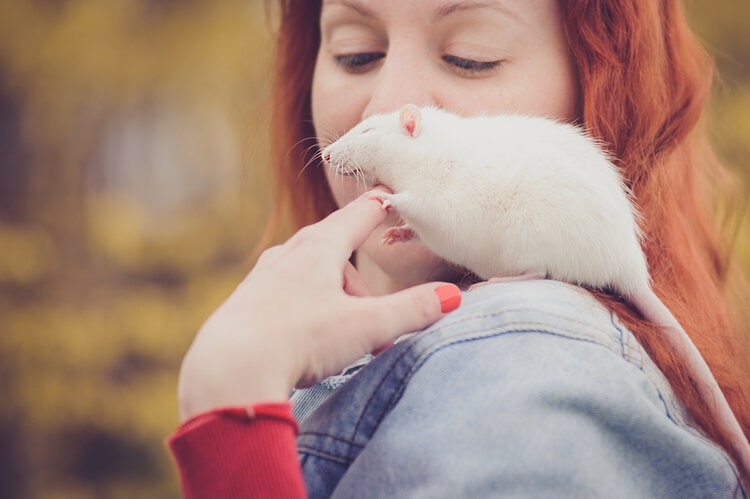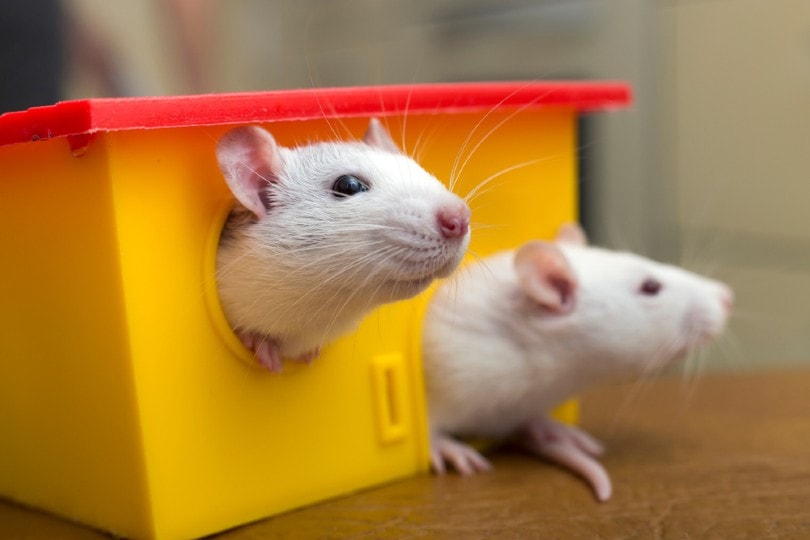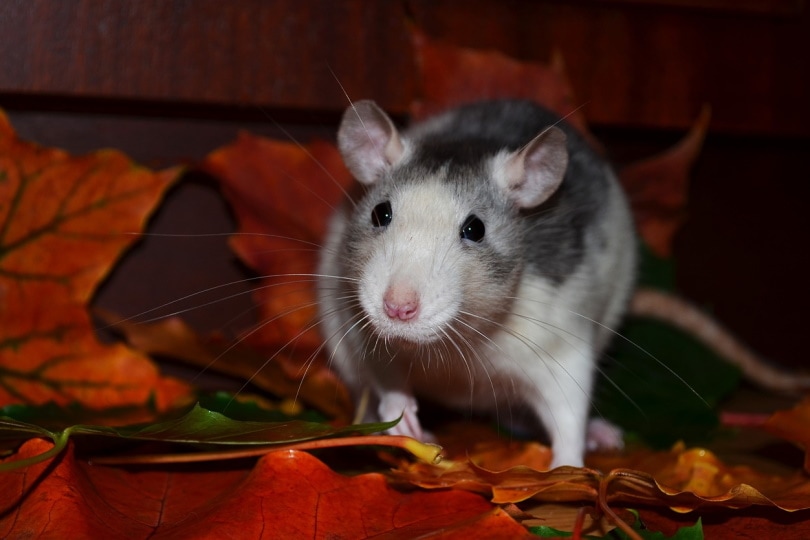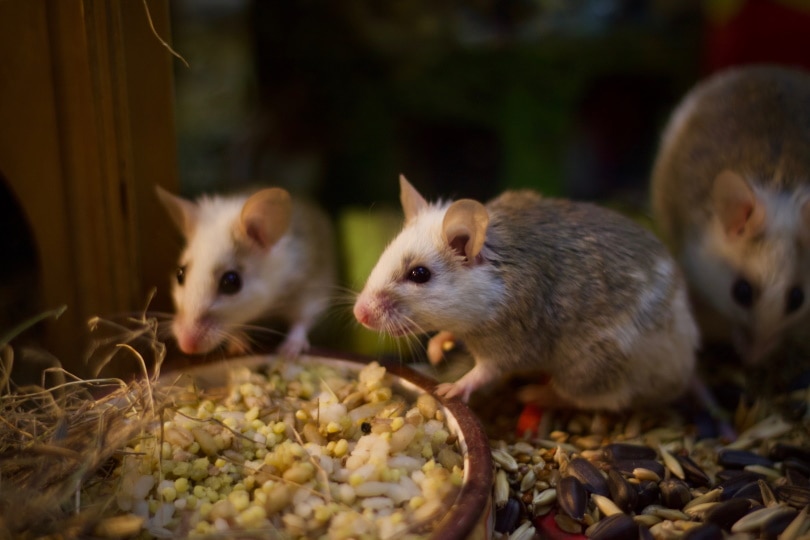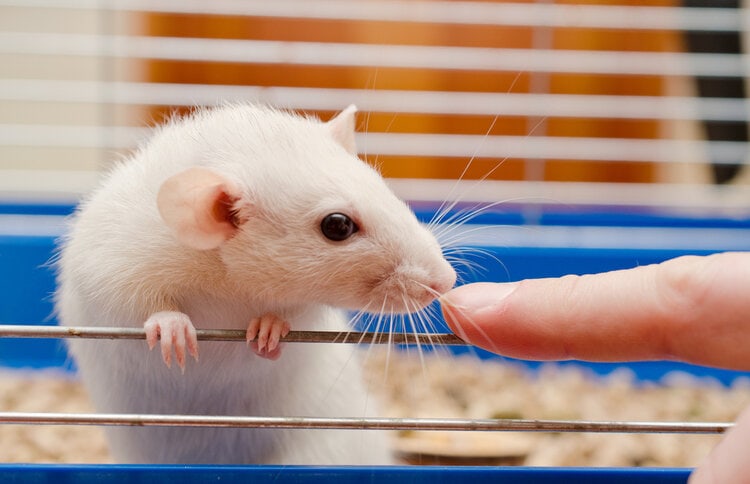
Surprisingly smart and friendly, rats make fantastic pets for people of any age. Playful little pals that love to cuddle, explore, and learn, rats are social creatures that thrive on human companionship. In order to properly care for your rat, you’ll need all of the right rat accessories, including a spacious cage, toys, bedding, and food.
If you’re thinking about adding this adorable critter to your household, here is everything you need to know about taking care of your pet rat.
Rat Facts
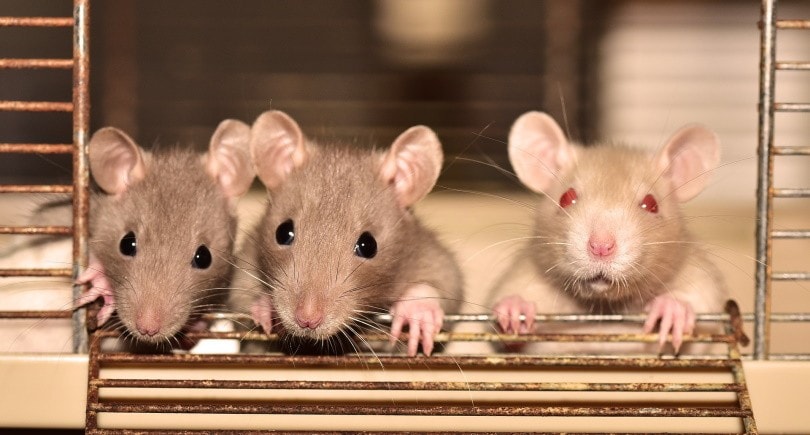
Do Rats Make Good Pets?

Despite their reputation as dirty city vermin, rats actually make fantastic pets for both kids and adults. Rats are much cleaner than most people give them credit for and love to groom themselves and each other. Loyal and loving, rats will show affection to their beloved owners and cuddle up close to your chest. They can even sit on your shoulder and accompany you around the house!
Though rats don’t live very long, they will add fulfillment and joy to your life for as long as they’re around. If you own larger pets, such as a dog or a cat, you need to keep a close eye on your rodent so he doesn’t get injured by the larger animals. Additionally, rats do need preventive medical care to treat issues such as tumors, uterine infections, and respiratory conditions.
Where Can I Get a Pet Rat?
Many folks opt to buy a pet rat from their local pet store. However, you can also buy rats from specialty breeders and even adopt one from your neighborhood animal shelter. People who are on the hunt for a fancy rat will generally get these rodents from qualified rat breeders. Hairless, Dumbo, Satin, Tailless, and Bristle Coat rats can all be picked up from an exotic rat breeder.
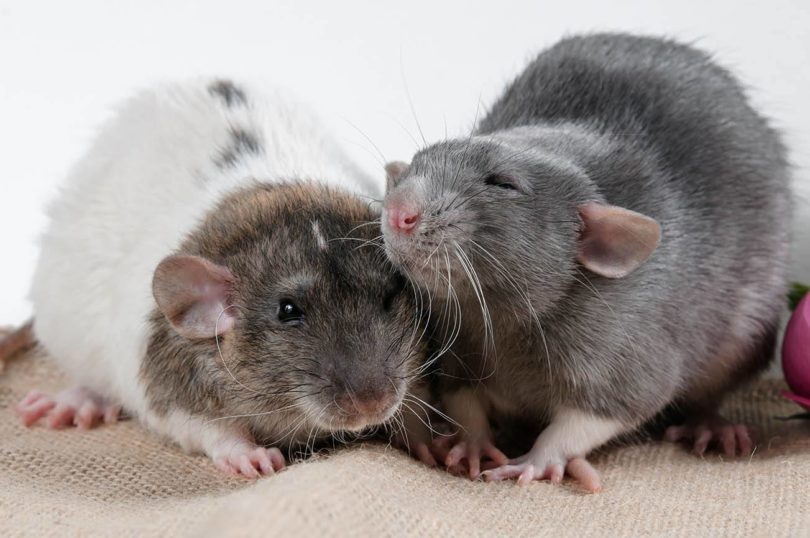
How Much Does It Cost to Own a Pet Rat?
Expect to spend up to $400 to $500 annually for your pet rat. The initial cost of buying a rat will cost between $100 and $300 for items such as their cage, accessories, bedding, food, and toys. The rat itself will run you between $10 and $30.
Though a pet rat will cost you up to $500, the love he’ll provide you with is priceless.
What Kind of Home Does My Pet Rat Need?
A large wire cage with horizontal bars is the best type of home for a pet rat. This way, your rodent pal can climb up and down the cage and get plenty of exercises. At a minimum, your rat’s cage should be two- square feet, or 12 by 24 inches. However, it’s always better to choose a larger cage so your rat has plenty of room to move around.
Never get a cage with wire flooring as they can hurt your pet’s little paws. Cages with different levels will encourage your rat to create different “zones” in his cage. For example, he may use the floor as his feeding zone and the top level as his sleeping area.
Always keep your rat’s cage in a safe, quiet area of your home that is not accessible to other pets. Avoid placing the cage in direct sunlight or in drafty areas. Rats are most active at night, so don’t keep your rat in your bedroom if you want to sleep soundly.
What Should I Feed My Pet Rat?
Rats need constant access to fresh food and water. The best way to provide your rat with clean water is to attach a water bottle with a sipper tube to the side of his cage. Change the water daily and always ensure the water bottle is full.
Use a large, heavy ceramic food dish for your rat’s meals. These types of bowls won’t tip over and spill food all over the cage.
Block or pelleted rat food provides plenty of vitamins and minerals to your pet. Select a rat block that has a low fat and calorie content and is high in soy meal rather than corn. In addition to commercial rat food, give your pet plenty of fruits, nuts, and veggies. The occasional low-fat cooked meat or mealworm treat will ensure your rat is getting his proteins.
How Do I Take Care of My Pet Rat?
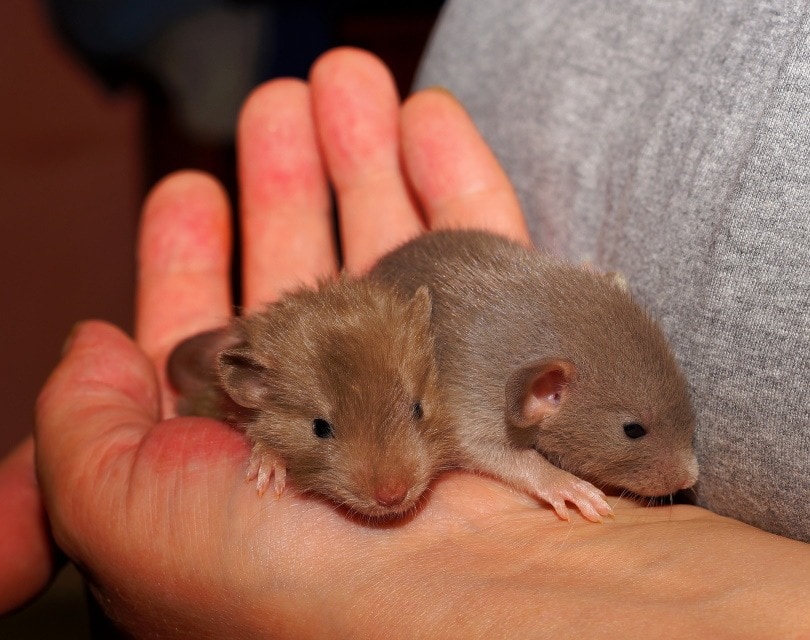
Rats are social creatures that require plenty of playtime and socialization. Don’t just leave your rat in his cage and forget about him. Allow him to climb on your hands and chest. You can also outfit his cage with cardboard tubes, ropes, toys, tunnels, platforms, and hammocks to keep him engaged while he’s in his house. Rotate or move the toys regularly to keep your rat challenged and to prevent boredom.
If you let your rat free roam inside of your home, always keep a close eye on him and keep all other pets away. Don’t let your rat scoot under any furniture or chew on wires or walls.
When handling your pet rat, handle him gently, and don’t put your fingers near his mouth. He may bite! Never pick your rat up by his tail. Always supervise your children when they’re handling your rat.
While rats don’t need to be groomed (they do it themselves!) they do need their sharp nails trimmed every two months or so. Use a pair of human nail clippers and trim the nails as needed. Avoid trimming the pink portion of the nails. If you accidentally nip the quick and nick a blood vessel, apply a small dab of cornstarch to the tip of the nail to quickly stop any bleeding.
How Do I Know If My Pet Rat Is Sick?
The most common health conditions that affect pet rats are tumors and respiratory problems. If you see a large, unusual growth on your rat, it could be a tumor. Schedule a vet appointment to properly diagnose the treat the problem. If you notice that your rat is sneezing or sniffling, take him to the vet to get treated.
Rats can also develop bumblefoot, which is a painful condition that causes ulcers on the bottoms of their paws. If left untreated, this condition can be fatal.
Schedule bi-annual wellness checkups to ensure your rat is healthy.
Conclusion
Pet rats will make a great addition to any home. These loving, playful, and curious creatures need a lot of socialization and stimulation to stay happy and healthy. If you’re in the market for a petite pet, consider adding a rat to your home today!
Featured Image Credit: LankaP, Shutterstock



